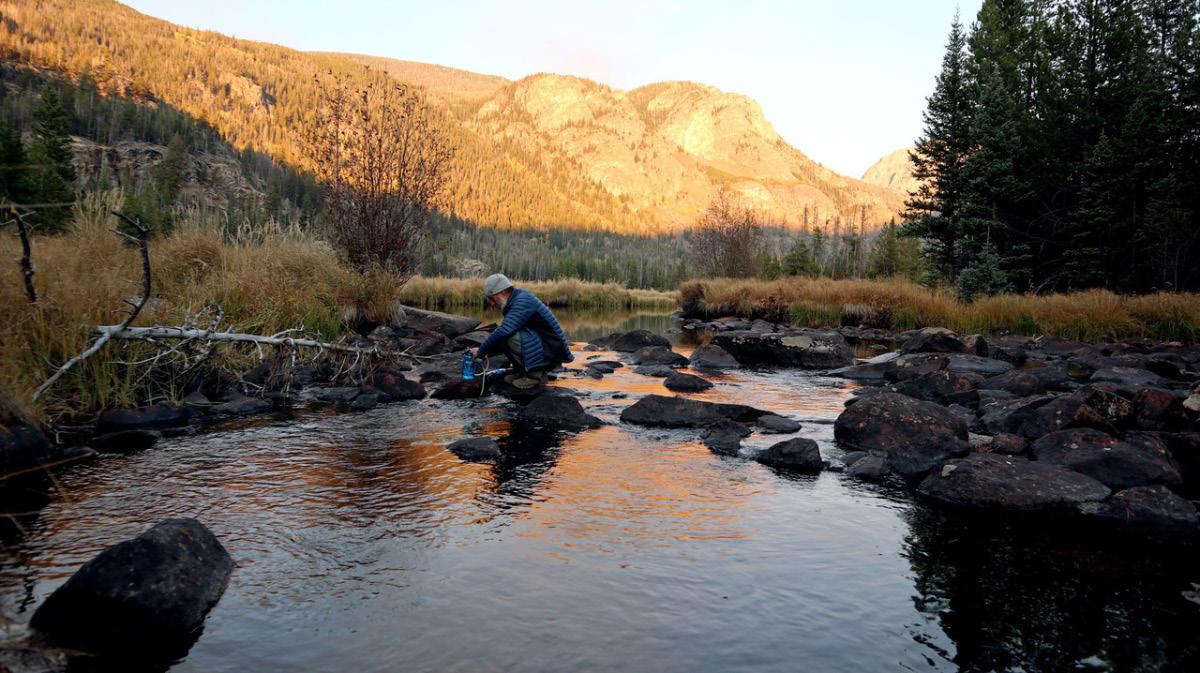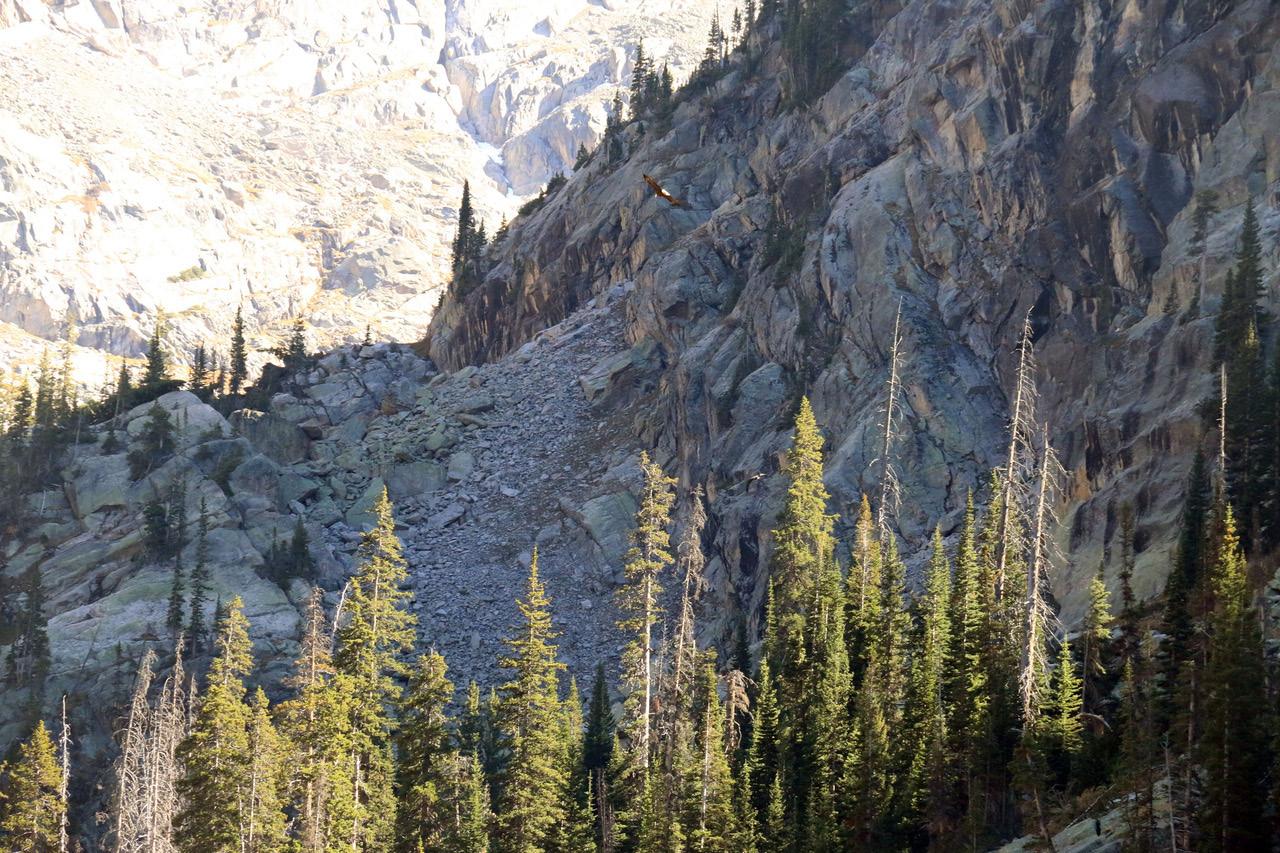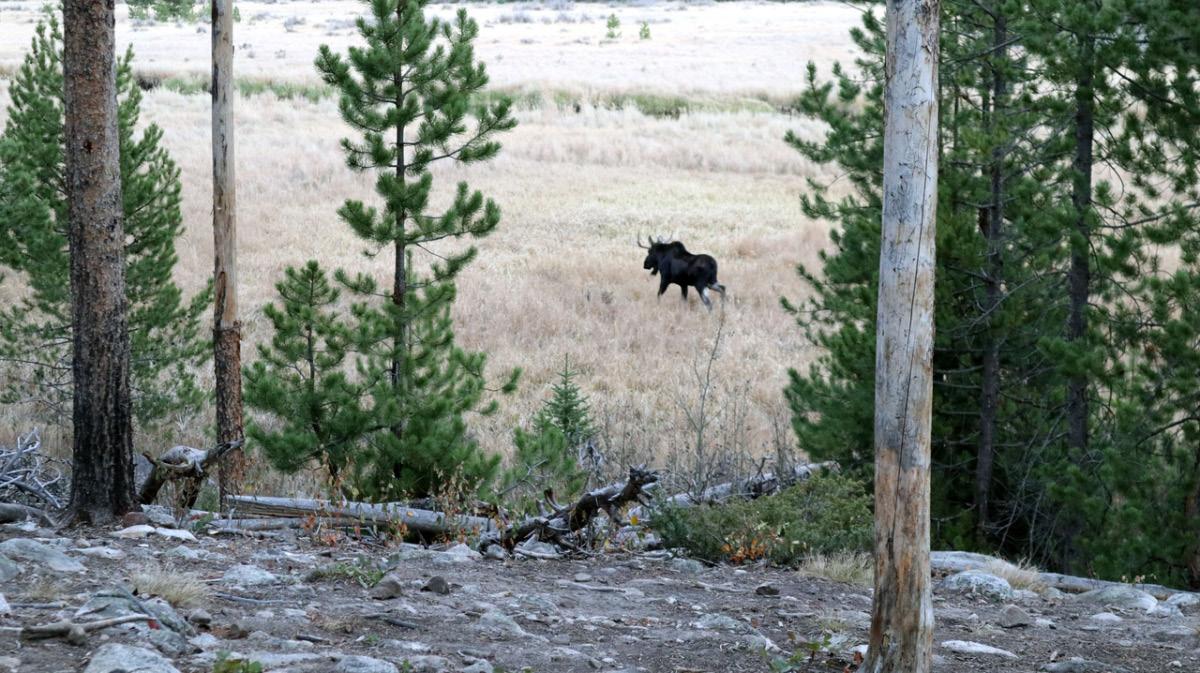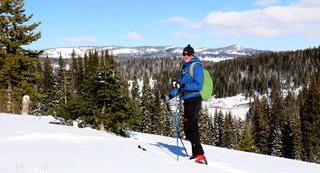
3 minute read
Where Leave-No-Trace is law
Photos and story by Murray Selleck
In my younger days I hiked, climbed, skied, and explored many National Parks including North Cascades, Glacier, Olympic, Yellowstone, Crater Lake, the Grand Canyon, and of course, Rocky Mountain National Park.
Advertisement
But over the years seeing video of long lines of cars bumper to bumper to view elk wore me down. I'd read about far too many incidents of people approaching wildlife believing the National Parks are nothing but petting zoos and that had me scratching my head.
And, a few years ago, National Park rangers in Yellowstone had to wear face masks not because of COVID but to protect themselves from snowmobile emissions. I let myself believe the parks had become too crazy for me.
For decades I had decided that the only outdoor experience I wanted was in our National Forests and Wilderness Areas. I had let myself believe there was too much of a theme park atmosphere to the National Parks and I wanted nothing to do with it.
Who needs the long lines, the crowded parking lots, the snails' paced Winnebagos touring National Park roads?

Well, it turns out, I do.
Recently I was able to reconnect with a life-long friend for a backpacking trip in Rocky Mountain National Park that included some big day hikes. RMNP was the perfect half-way point for us to meet.
We met in Grand Lake on the west side of RMNP and made our way to the Lake Verna Trailhead. As expected, the parking lot was packed. As we began our hike there were lots of folks on the trail. It was busy.
Thankfully, a not-so-curious thing happened as we made our way deeper inside the park. There were less and less hikers as our mileage increased until we were the only ones. Once the sun began its early Autumn descent it felt like we had the entire park to ourselves.
The beauty of Rocky Mountain National Park on this autumn day was overwhelming. I had forgotten. The shock of the big mountains in front of me was stunning. All that night a nearby elk bugled his desires. He was so close it seemed like I could feel the origin and vibration of those bugles from deep within his chest. Sleep was nonexistent but if there ever was a good reason to loose eight or nine hours of shut-eye, this was it.
The next morning was cold. A soft steam was rising from the comparatively warm East Inlet Creek. In the meadow in front of us tall crisp grasses held a sparkling frost highlighted from a slow-warming sun.
Coffee, breakfast, and it became time to hike. Our pace was quick because the trail was built with practically all obstacles removed from our way. There were rocks placed for quick hopscotch creek crossings and optional high-water bridges. Heavy blocks of stone carved, drilled, and carried into place creating massive stairways took all the burden out of gaining elevation. We laughed and joked about these engineered trails but slowly a thought was forming.

In all my exploring in our National Forests and Wilderness areas I've witnessed far too many switchback trails cut by hikers causing erosion. I've dismantled countless fire rings left by less-than-caring users. I've seen a single path become three, four, or five parallel trails from hikers not willing to get their feet wet from spring runoff. I've picked up too much trash left behind in hunting camps. Often I've seen little trace of the Leave-No-Trace Ethic.
And here, I realized, is where RMNP excels. With these trails built to last, there is no reason to take a shortcut. With the designated camping areas assigned by a permit system our impact is isolated allowing a vast ecosystem to remain untrammeled and beautiful.
The rest of our day was filled with sights of four bald eagles soaring over high alpine lakes, a bull moose in such beautiful scenery even Walt Disney couldn't have conceived it. The sound of mountain water and whispering wind coursing through spruce and pine boughs and brittle late season grasses.

Who needs a park system of permits and registrations? Who needs to be patient with long lines and moments of isolated over-crowding?
I do. And I am grateful that our country established one of its best ideas ever... The National Parks and, in particular, Rocky Mountain National Park.
Wildfire or not… I'm back!

Murray Selleck moved to Colorado in 1978. In the early 80’s he split his time working winter’s in a ski shop in Steamboat Springs and his summers guiding on the Arkansas River. His career in the specialty outdoor industry has continued for over 30 years. Needless to say, he has witnessed decades of change in outdoor equipment and clothing. Steamboat Springs continues to be home.









